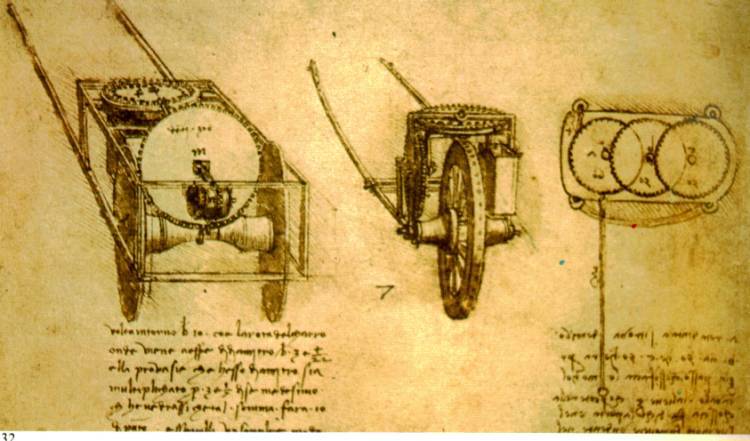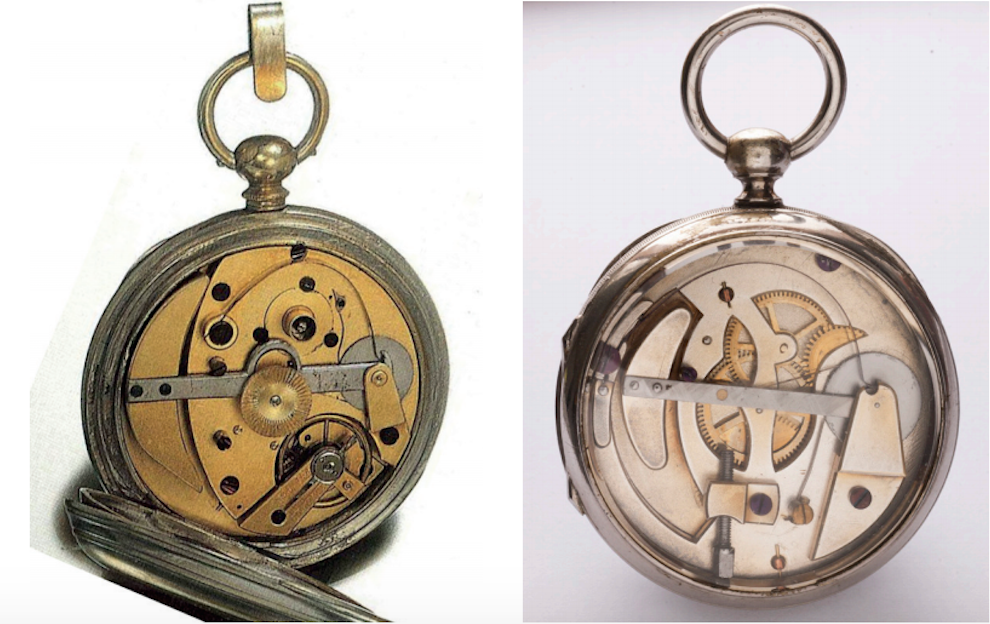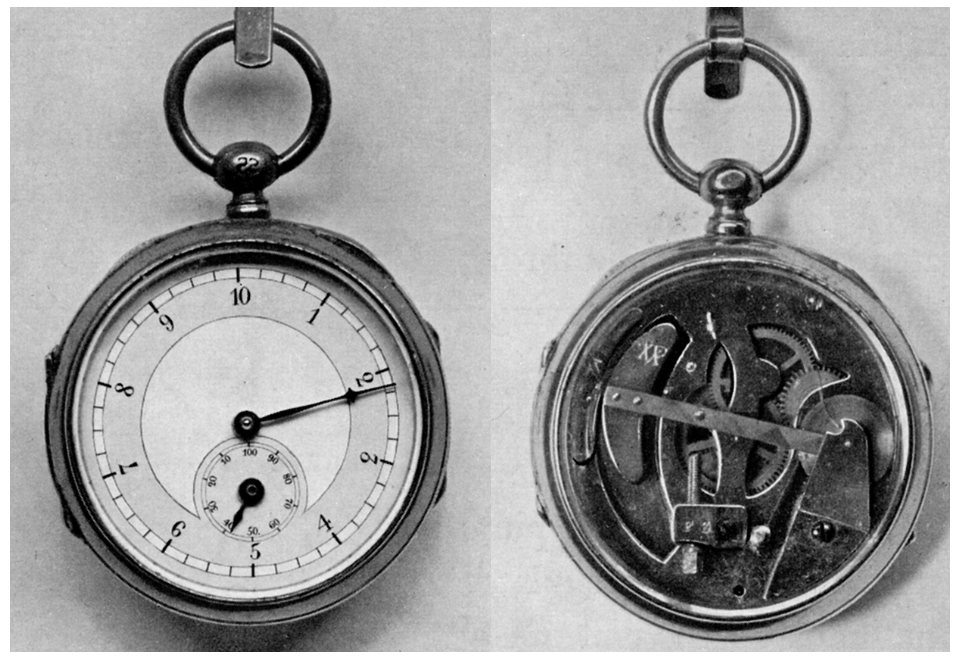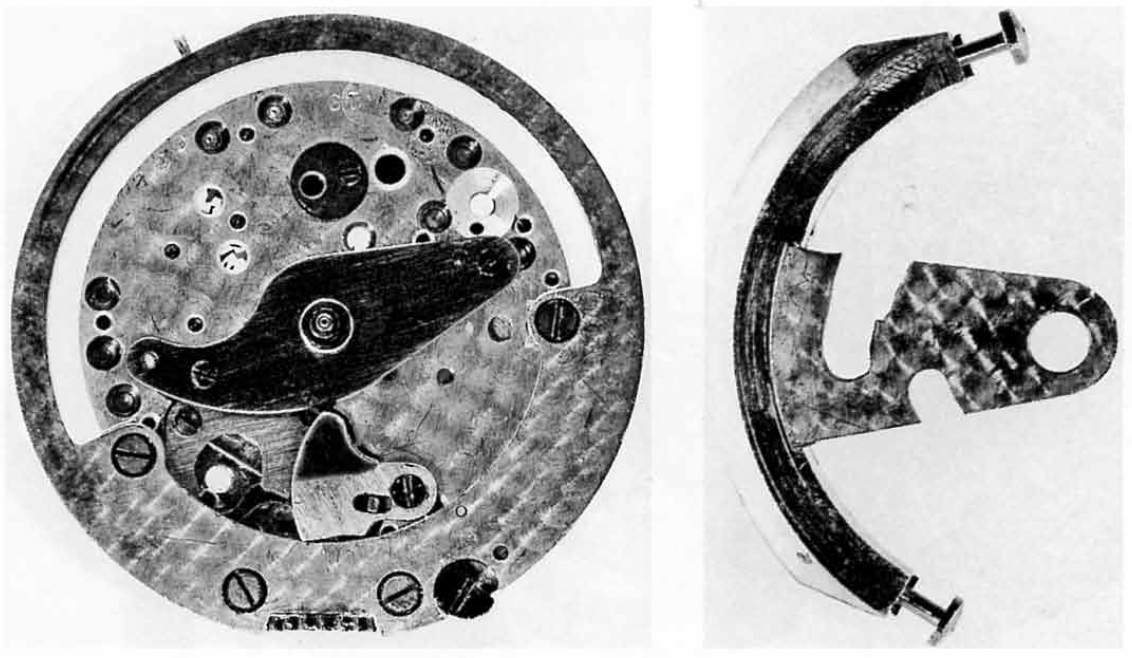Who invented the pedometer: an artist, president and three famous watchmakers
Once again, faced with the fact that most electronic pedometers count “false” steps, and if you have any of these devices, shake your hand a couple of times to make sure ... So, once again faced with a similar one, I took care whether it always has been, but for this I had to recall by name everyone who is called the “Father of the pedometer,” starting with Leonardo da Vinci.

Under the cut, a small selection of names.

Leonardo The
glorious husband of the Renaissance, which he didn’t do, and he sketched a lot of it, so everyone blames Leonardo. Even at the institute we were taught, if you do not know what and when it arose, look at the person you are talking to: if he is rustic, you can say that “something” was created by the Romans; if clearly educated - Egypt or China; if you are sophisticated - Leonardo da Vinci.

In this figure, which is replicated in any children's encyclopedia, the device, which is called the progenitor of the pedometer, is essentially an odometer that was used for military purposes to optimize the maps of that time, helping to calculate the distance that the army goes every day. At the same time, there is no exact mention that it has ever been implemented.
The fact that Leonardo was passionate about the creation of such "gadgets" can be said by his hourly sketches, for example, the fusee, which was of fundamental importance before the invention of the free anchor movement.

But again - there is no confirmation of completed pedometer projects or watches according to Leonardo’s drawings. A significant part of the drawings, including its pendulum mechanisms, can be found in the Madrid Code. Whether they are directly related to pedometers is not clear, however, it can be understood that a rope wound around an axis should set in motion a gear whose teeth can count the distance, and the swing of such a pendulum can be carried out by a step.

Researchers date these figures to 1492.
Jefferson
Obama wears Fitbit, but he is not the first US president to use wearable technology. Here is a letter from Thomas Jefferson from 1788:
“I'm sending your pedometer. Tie one end of the tape to the loop of the pedometer, and attach a small hook to the other end of the tape ... cut a small hole in the bottom of your left pocket, pass the tape into the hole, draw the tape down along the trousers and fasten the hook to the strap tied at the knee level, in inch from the knee joint; then attach the pedometer itself to the top edge of your pocket. At each step you take, the tape is stretched to its full length and the pedometer accurately calculates the number of steps you take. The long arrow shows units and tens of steps, the flat arrow shows hundreds, and the short arrow of the pedometer shows thousands of steps. ”

We are talking about a small mechanical device, with gears inside, possibly adapted watches, the movement of which is stimulated by a step. In this sense, we have a real pedometer and probably the most accurate one.
But not the first "device" of this nature. Slightly earlier, in 1525, Jean Fernel presented his device, which was based on a system of gears and gears, which are set in motion by a kind of "swinging lever" that rotates the hands on four dials, sequentially counting units, tens, hundreds and thousands of steps.

A walking person could, for example, attach such a “pedometer” to the left of the belt, and with a cord tie a “swinging lever” to his right knee. At each step, the cord pulls the lever and the arrow of the lower dial advances one unit. When the arrow on the dial of units goes from 9 to 0, the arrow on the dial of dozens advances by one unit. When the dozen arrow, in turn, goes from 90 to 0, the arrow on the hundreds dial moves one unit, and so on.
Thus, a consistent automatic display of units of each decimal order was ensured.
Moreover, this invention was the forerunner of the legendary Pascalin, and then it's time to think about what a pedometer and a calculator have in common!

The principle of action "Pascalina"
"False" steps will appear a little later, along with a watch that implements the automatic winding function.
The debate about who is the author of the concept of a mechanical watch with a car factory is already fading. The parties to this dispute are Perrele and Sarton . With a difference of one year (1,777 - Perrele; 1,778 - Sarton) they declare a watch that can be let down by taking a certain number of steps per day. It was a full-fledged wearable mechanics, which did not require fixing anything extra on the leg, and the whole process here depends on the rotation of the "rotor" mounted on the axis.
The action of the Perrele mechanism, which, according to Wikipedia, nevertheless created just a pedometer in 1780, for itself, for the soul, is based on the principle of tension of the clockwork spring of a watch due to mechanical movement.

A drawing signed by Sarton.
From this moment on, the history of watches and pedometers seems to go hand in hand, and in one edition dedicated to watches, from 1952, they are resolutely asked not to be confused, since these are completely different devices!
Guess where what:

Pedometer model 1 952:

The car factory system itself was adjusted and improved, so if we talk about the contribution of watchmakers to the creation of the pedometer, you can include it in the “Fathers” list through one! But the "new era" of the car factory began in 1924 with Harwood.

His watch models use a bumper-type automatic winding system (Available in some Omega, for example). The system was nicknamed so because in this winding mechanism the movement of the oscillating load is converted to the voltage of the winding spring.

During the movements of the wrist of a person wearing a watch, the oscillating load of the mechanism makes an arcuate movement back and forth. The oscillating load of the automatic winding mechanism is suspended for movement in both directions, but initially the clock winding effect occurred only when the load moved in only one direction.
In order for the mechanism to act during any movements, the load oscillations were fixed on both sides with the help of two buffer springs, which provide a reverse “bounce” of the load in the opposite direction.

To prevent excessive spring tension, Harwood invented and patented a blade spring mechanism that holds the friction disk in a certain position, thereby creating a clutch that stops the spring tension process when the working spring is already stretched as much as possible.
Nevertheless, it has not been possible to speculate on the names of watchmakers for a long time, because they still wanted to make watches and make watches, and the fact that their designs were the basis of pedometers did not bother them much.
Nowadays, one of the "preachers" of the pedometer was Yoshiro Hatano. In the 1960s, he began selling Manpo-kei, a device whose name translates as 10,000 steps. The professors were very worried about the problem of obesity among the Japanese, and studies have shown that they walk quite a bit. Marketing and a little authority made both the doctor and his device popular!

You already know better about electronic pedometers.
Take care of yourself!

Under the cut, a small selection of names.

Leonardo The
glorious husband of the Renaissance, which he didn’t do, and he sketched a lot of it, so everyone blames Leonardo. Even at the institute we were taught, if you do not know what and when it arose, look at the person you are talking to: if he is rustic, you can say that “something” was created by the Romans; if clearly educated - Egypt or China; if you are sophisticated - Leonardo da Vinci.

In this figure, which is replicated in any children's encyclopedia, the device, which is called the progenitor of the pedometer, is essentially an odometer that was used for military purposes to optimize the maps of that time, helping to calculate the distance that the army goes every day. At the same time, there is no exact mention that it has ever been implemented.
The fact that Leonardo was passionate about the creation of such "gadgets" can be said by his hourly sketches, for example, the fusee, which was of fundamental importance before the invention of the free anchor movement.

But again - there is no confirmation of completed pedometer projects or watches according to Leonardo’s drawings. A significant part of the drawings, including its pendulum mechanisms, can be found in the Madrid Code. Whether they are directly related to pedometers is not clear, however, it can be understood that a rope wound around an axis should set in motion a gear whose teeth can count the distance, and the swing of such a pendulum can be carried out by a step.

Researchers date these figures to 1492.
Jefferson
Obama wears Fitbit, but he is not the first US president to use wearable technology. Here is a letter from Thomas Jefferson from 1788:
“I'm sending your pedometer. Tie one end of the tape to the loop of the pedometer, and attach a small hook to the other end of the tape ... cut a small hole in the bottom of your left pocket, pass the tape into the hole, draw the tape down along the trousers and fasten the hook to the strap tied at the knee level, in inch from the knee joint; then attach the pedometer itself to the top edge of your pocket. At each step you take, the tape is stretched to its full length and the pedometer accurately calculates the number of steps you take. The long arrow shows units and tens of steps, the flat arrow shows hundreds, and the short arrow of the pedometer shows thousands of steps. ”

We are talking about a small mechanical device, with gears inside, possibly adapted watches, the movement of which is stimulated by a step. In this sense, we have a real pedometer and probably the most accurate one.
But not the first "device" of this nature. Slightly earlier, in 1525, Jean Fernel presented his device, which was based on a system of gears and gears, which are set in motion by a kind of "swinging lever" that rotates the hands on four dials, sequentially counting units, tens, hundreds and thousands of steps.

A walking person could, for example, attach such a “pedometer” to the left of the belt, and with a cord tie a “swinging lever” to his right knee. At each step, the cord pulls the lever and the arrow of the lower dial advances one unit. When the arrow on the dial of units goes from 9 to 0, the arrow on the dial of dozens advances by one unit. When the dozen arrow, in turn, goes from 90 to 0, the arrow on the hundreds dial moves one unit, and so on.
Thus, a consistent automatic display of units of each decimal order was ensured.
Moreover, this invention was the forerunner of the legendary Pascalin, and then it's time to think about what a pedometer and a calculator have in common!

The principle of action "Pascalina"
"False" steps will appear a little later, along with a watch that implements the automatic winding function.
The debate about who is the author of the concept of a mechanical watch with a car factory is already fading. The parties to this dispute are Perrele and Sarton . With a difference of one year (1,777 - Perrele; 1,778 - Sarton) they declare a watch that can be let down by taking a certain number of steps per day. It was a full-fledged wearable mechanics, which did not require fixing anything extra on the leg, and the whole process here depends on the rotation of the "rotor" mounted on the axis.
The action of the Perrele mechanism, which, according to Wikipedia, nevertheless created just a pedometer in 1780, for itself, for the soul, is based on the principle of tension of the clockwork spring of a watch due to mechanical movement.

A drawing signed by Sarton.
From this moment on, the history of watches and pedometers seems to go hand in hand, and in one edition dedicated to watches, from 1952, they are resolutely asked not to be confused, since these are completely different devices!
Guess where what:

Pedometer model 1 952:

The car factory system itself was adjusted and improved, so if we talk about the contribution of watchmakers to the creation of the pedometer, you can include it in the “Fathers” list through one! But the "new era" of the car factory began in 1924 with Harwood.

His watch models use a bumper-type automatic winding system (Available in some Omega, for example). The system was nicknamed so because in this winding mechanism the movement of the oscillating load is converted to the voltage of the winding spring.

During the movements of the wrist of a person wearing a watch, the oscillating load of the mechanism makes an arcuate movement back and forth. The oscillating load of the automatic winding mechanism is suspended for movement in both directions, but initially the clock winding effect occurred only when the load moved in only one direction.
In order for the mechanism to act during any movements, the load oscillations were fixed on both sides with the help of two buffer springs, which provide a reverse “bounce” of the load in the opposite direction.

To prevent excessive spring tension, Harwood invented and patented a blade spring mechanism that holds the friction disk in a certain position, thereby creating a clutch that stops the spring tension process when the working spring is already stretched as much as possible.
Nevertheless, it has not been possible to speculate on the names of watchmakers for a long time, because they still wanted to make watches and make watches, and the fact that their designs were the basis of pedometers did not bother them much.
Nowadays, one of the "preachers" of the pedometer was Yoshiro Hatano. In the 1960s, he began selling Manpo-kei, a device whose name translates as 10,000 steps. The professors were very worried about the problem of obesity among the Japanese, and studies have shown that they walk quite a bit. Marketing and a little authority made both the doctor and his device popular!

You already know better about electronic pedometers.
Take care of yourself!
